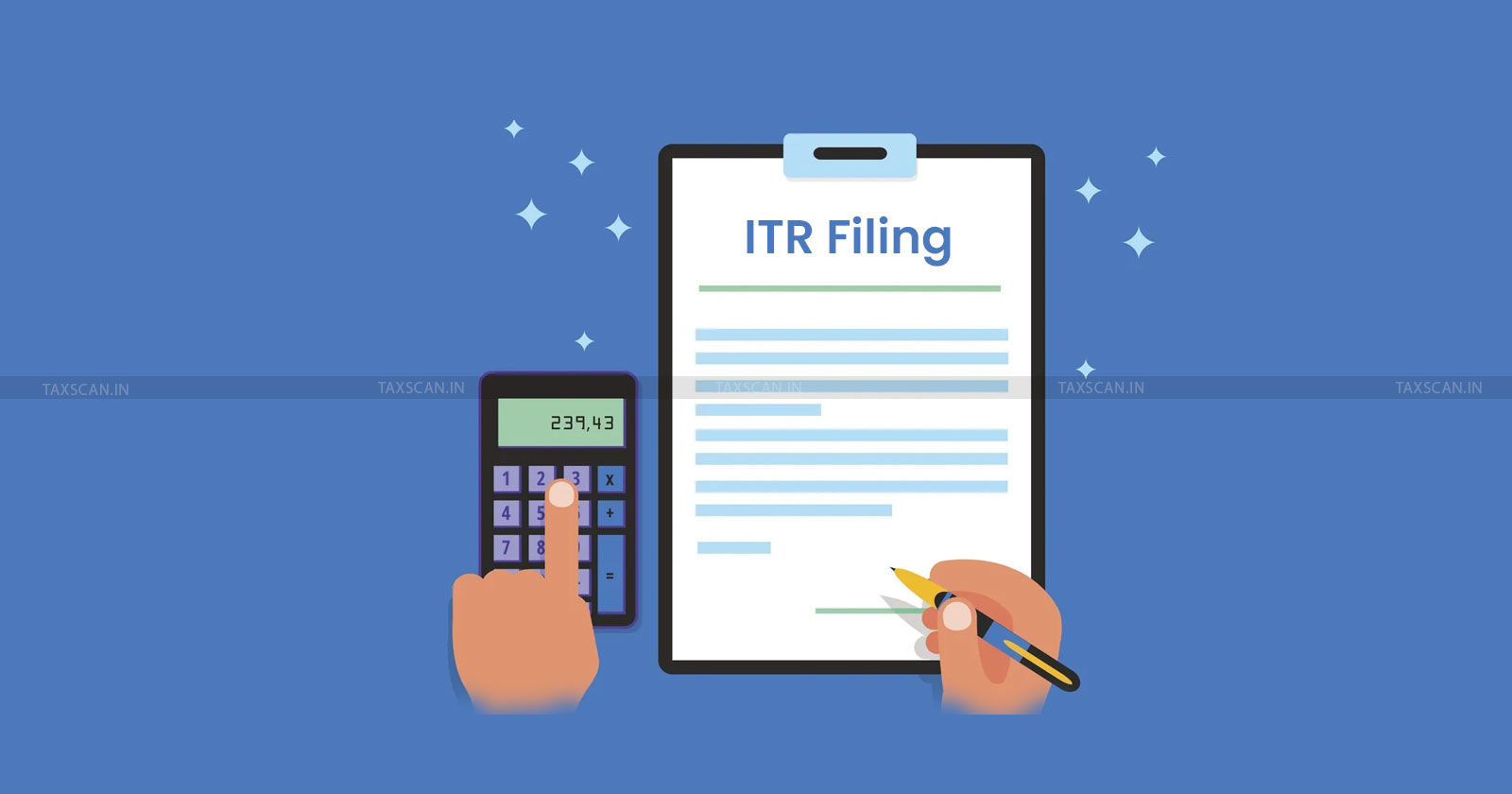ITR Filing: How to File Income Tax Returns (ITR) Step by Step for Beginners
In India, filing your Income Tax Return (ITR) is an essential yearly duty for all eligible taxpayers

In addition to being required by law, filing your income tax return (ITR) has several important financial advantages. You must lawfully file an ITR if your gross total income (before deductions) is more than the basic exemption limit. Age and the tax regime selected affect the exemption limit. Section 234F of the Income Tax Act imposes penalties for failing to file your ITR by the deadline. A fine of up to ₹5,000 (₹1,000 if total income exceeds ₹5 lakh) may be imposed.
Gratuity With Interest falls within definition of Operational Debt u/s 5(21) of IBC: NCLAT [Read Order]
Interest charges under Sections 234A (delay in filing), 234B (default in advance tax payment), and 234C (deferment of advance tax instalments) may also result from failing to file on time if you have taxes owing. The Income Tax Department has the authority to start legal action, including prosecution, in situations involving substantial tax evasion or failure to file despite having taxable income.
In India, filing your Income Tax Return (ITR) is an essential yearly duty for all eligible taxpayers. Although it may appear intimidating to novices, the online e-filing gateway has greatly streamlined the process. In order to successfully file your ITR for the Financial Year 2024–2025 (Assessment Year 2025–2026), you must follow these crucial steps. For the majority of individual taxpayers (salaried, independent contractors who don't need an audit), the deadline for filing your FY 2024–2025 ITR is July 31, 2025.
Master the Practical Aspects of ITR Filing (ITR-1 to ITR-7) - Click Here
Getting Started - Prerequisites
Make sure you have the following before starting the online filing process:
- PAN Card
- Aadhaar Card
- Registered Mobile Number
- Bank Account Details
- Form 16: (For Salaried Individuals) : This certificate from your employer details your salary, TDS (Tax Deducted at Source) by the employer, and other allowances. If you've worked for multiple employers during the financial year, collect Form 16 from all of them.
- Form 26AS & Annual Information Statement (AIS)
- Form 26AS: A consolidated tax statement showing details of TDS, TCS (Tax Collected at Source), advance tax paid, and self-assessment tax paid against your PAN.
- Interest Certificates
- Investment Proofs (if claiming deductions)
- Capital Gains Statements (if applicable)
- Rental Income Details (if applicable)
- Other Income Details
Master the Practical Aspects of ITR Filing (ITR-1 to ITR-7) - Click Here
Choosing the Right ITR Form
Choosing the appropriate ITR form is essential. If you file the incorrect form, your return may be deemed "defective."
- ITR-1 (Sahaj):For residents who earn up to ₹50 lakh overall from their salaries, one home, other sources (such as interest or family pension), and up to ₹5,000 from agriculture. Not for people who have invested in unlisted stock shares, are directors of a firm, or get income from their business or profession or capital gains.
- ITR-2: For people and HUFs who don't have a business or occupation but may have assets or income from overseas sources, capital gains, or more than one home.
- ITR-3: For individuals and HUFs having income from business or profession.
- ITR-4 (Sugam):For residents who are individuals, HUFs, or firms (apart from LLPs) with a total income of up to ₹50 lakh and who earn money from their businesses and professions as determined by sections 44AD, 44ADA, or 44AE (presumptive income).
Master the Practical Aspects of ITR Filing (ITR-1 to ITR-7) - Click Here
Step-by-Step Guide to e-Filing Your ITR
The primary method for ITR filing is online through the official Income Tax Department e-filing portal: https://www.incometax.gov.in/iec/foportal/
Registration (for first-time users)
- Go to the e-filing portal.
- Click on "Register."
- Select "Taxpayer" and enter your PAN. Click "Validate."
- Fill in the required details like name, date of birth, gender, and residential status.
- Provide your mobile number and email ID. These will be verified with OTPs.
- Set a password for your account and a secure login message.
- Once registration is complete, you will receive a confirmation.
Login to the e-Filing Portal
- Go to the e-filing portal.
- Click on "Login."
- Enter your User ID (which is your PAN), your password, and the captcha code. Click "Continue."
Navigate to File Income Tax Return
- On your dashboard, click on "e-File" > "Income Tax Returns" > "File Income Tax Return."
- Select Assessment Year (AY) and Mode of Filing
- Select the Assessment Year as 2025-26 (for income earned between April 1, 2024, and March 31, 2025).
- Select the Mode of Filing as "Online."
- Click "Continue."
Master the Practical Aspects of ITR Filing (ITR-1 to ITR-7) - Click Here
Select Status and ITR Type
- Select your applicable filing status: "Individual."
- Click "Proceed with ITR [selected form number]."
Choose the Reason for Filing ITR
The amount of taxable income exceeds the basic exemption threshold. Filing is required based on certain criteria (e.g., power consumption, overseas travel expenses, deposits in current accounts exceeding restrictions). After making your selection, click "Continue."
Fill in Your Details in the ITR Form
There are various parts to the online ITR form. Your name, DOB, contact information, PAN, and Aadhaar will be pre-filled in large part. Examine these details thoroughly. Verify every field that has been filled in. If there is a bank account where you would like to receive your refund, please provide the details. Be sure to pre-validate a minimum of one bank account.
Choose Your Tax Regime
The New Tax Regime is the default regime for FY 2024-25 (AY 2025-26). Before completing your ITR (if you have business income), you must specifically select the Old Tax Regime by submitting Form 10-IEA. This will allow you to claim a variety of deductions and exemptions, such as HRA, LTA, and those under Sections 80C, 80D, etc. The choice can be made directly on the ITR form by salaried people without company income. Compare the two regimens carefully to see which is better for you.
Master the Practical Aspects of ITR Filing (ITR-1 to ITR-7) - Click Here
Preview and Submit Your Return
- Once all sections are filled, review the summary of your tax computation.
- Preview your ITR to ensure all details are correct. You can download a draft.
- If everything is in order, click on "Proceed to Validation."
- The system will validate the return. If there are errors, it will highlight them. Correct the errors and validate again.
- Once validated successfully, click on "Proceed to Verification."
E-Verify Your Return
The last and most crucial step is this one. Until it is verified, your ITR file is not complete. You can e-verify your return within 30 days of the filing date.
Post-Filing
Verifying the status of an ITR filing is crucial. The e-filing portal allows you to view the status of your filed ITR ("e-File" > "Income Tax Returns" > "View Filed Returns"). The Income Tax Department may send out a notice if they have any questions or discover any inconsistencies. Answer it right now. Your pre-validated bank account will be credited with the refund if you qualify for one.
Support our journalism by subscribing to Taxscan premium. Follow us on Telegram for quick updates


